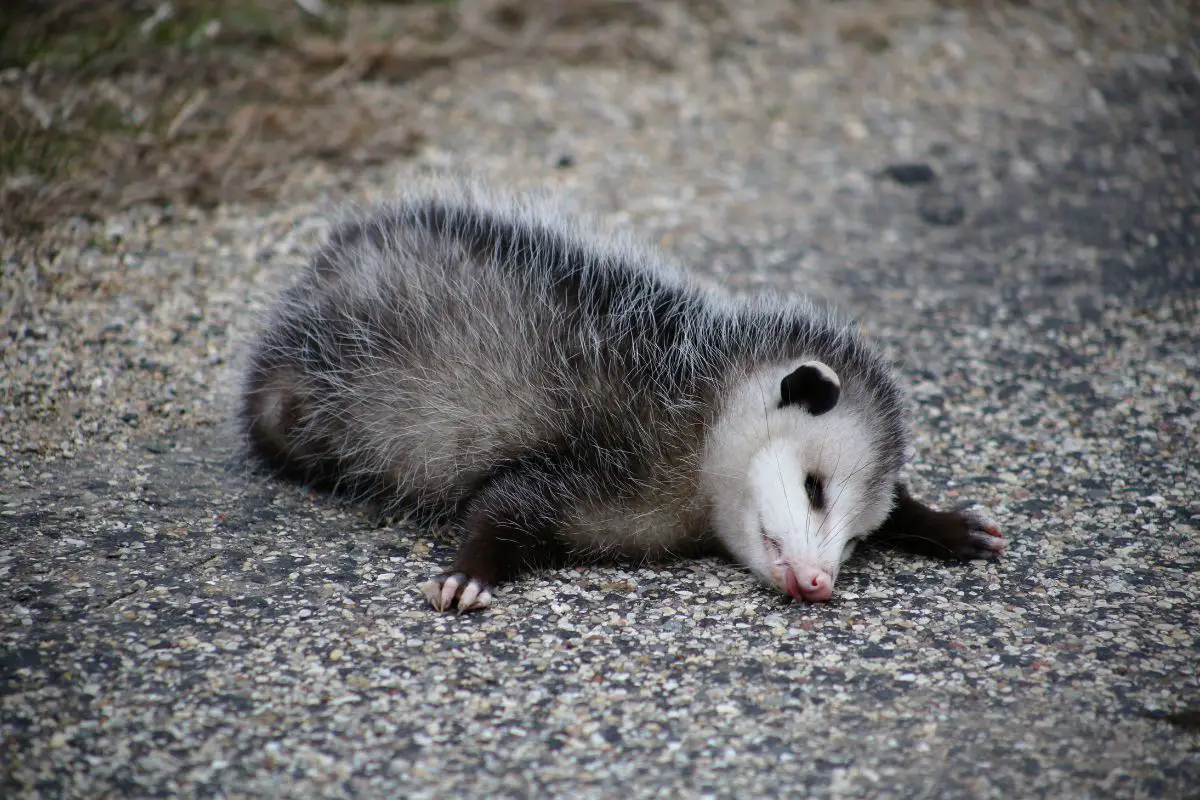
The words possum and opossum are used interchangeably but they refer to different animals. Scientists and most dictionaries say an opossum is the Virginia opossum or any of those that live in North or South America. The possum is a very similar animal that lives in Australia and New Guinea.
It is not really that simple though. In both countries, people pronounce it “possum” and sometimes use it in writing with or without the “O” at the beginning. Both countries could then lay a claim to either one.
It is popular to write “opossum,” and drop the “O” when speaking in both countries.
They are all marsupials. There are dozens of species on opposite sides of the world. For this article, we are going to focus on the opossum of the Americas.
What is called the Virginia Opossum is the only species of this marsupial that lives in the United States. There are a few dozen species that live in Central and South America. The Opossum that lives in the United States is the size of a cat.
These animals evolved in the Americas and in Australia, but not on other continents. Many of them are small and are called mouse varieties. They are one of the earth’s oldest mammals, according to evolutionary science.
1. Virginia Opossum
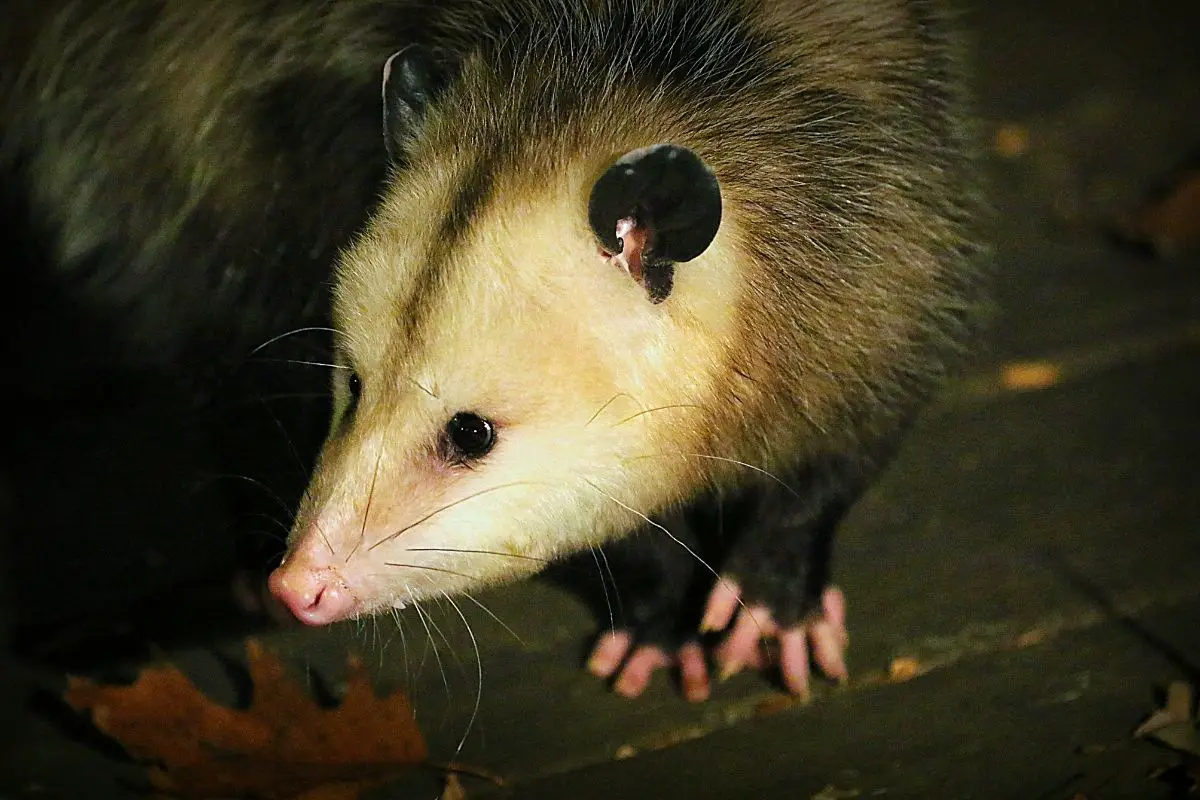
The Virginia Opossum is found in most of the United States, with the exception being the Rocky Mountains, and they are expanding their territory slowly. Before Europeans arrived, they were known only in Kentucky and Indiana. They were hunted for fur, and later for food, especially in the south. The Virginia Opossum likes to live near water, in the woods, or in thickets.
They are adaptable though and can live in areas where humans have altered the landscape. Some live in towns and suburbs. The Virginia Opossum is one of the larger marsupials but is still only around 12-13 pounds when fully grown, and about 21 inches long.
They reproduce a lot, so hunting and even loss of habitat have not hurt their population. They have a short lifespan, normally living just two years and maybe a little longer in captivity. This animal is nocturnal, and they are solitary except during mating season.
They live in hollow logs, and have been known to make nests under buildings, and fill their nests with leaves and paper. They are scavengers and eat what is available, including small animals, plants, fruits, grains, and carrion. They have many predators in the wild and may survive better in urban environments as a result.
They were introduced in other areas of the country during the depression and have spread since then. The Virginia opossum is a marsupial and has a pouch, the only mammal that does in the United States. The phrase “playing possum” comes from the Virginia Opposum’s habit of “playing dead” when threatened by another animal.
They will lie motionless, and it seems to be an involuntary action on their part. It can make predators ignore them. They do not, however, hang by their tails, as is popular lore.
Some other species of opossum have this habit as well. The Virginia Opossum is part of the Didelphis Genus, which also includes:
- White-eared opossum, Didelphis albiventris
- Big-eared opossum, Didelphis aurita
- Common opossum, Didelphis marsupialis (This species is one of the most common in South America).
- Andean white-eared opossum, Didelphis pernigra
2. Water opossum
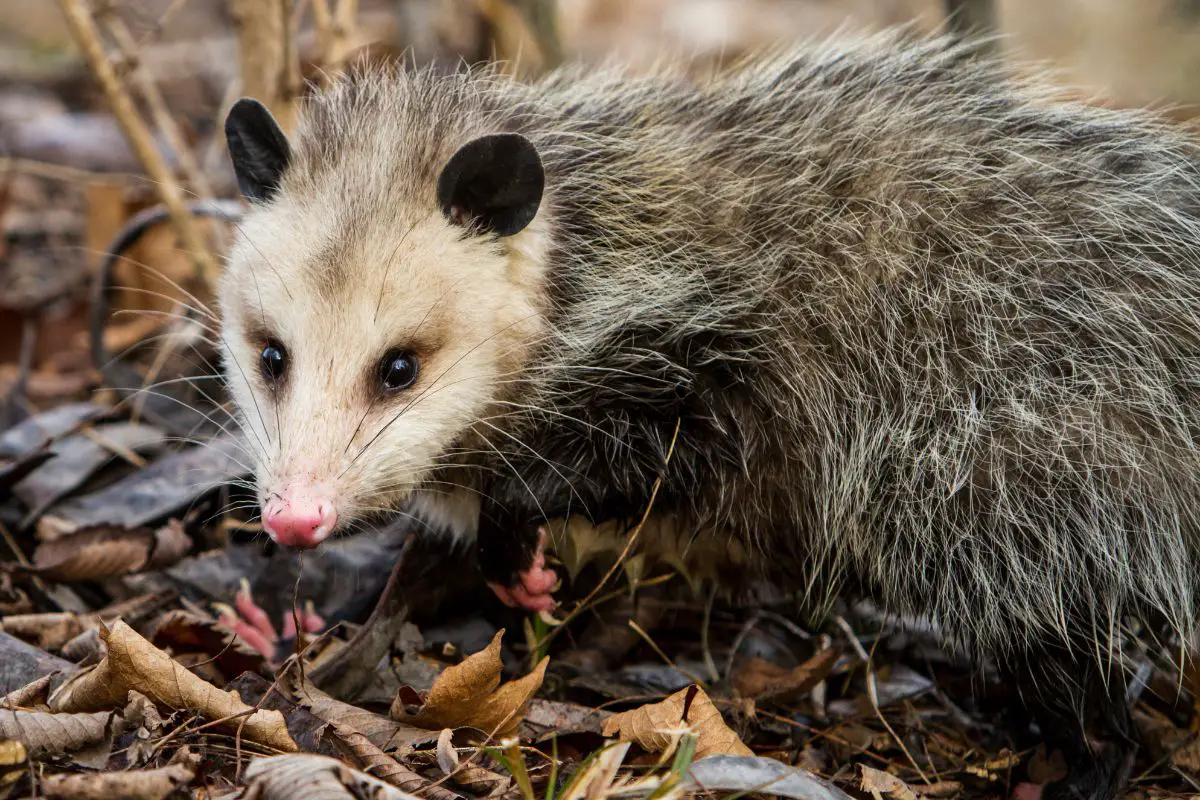
The water opossum lives in Mexico and Central America and is the only marsupial that is adapted to aquatic life. They are small rodents, weighing two pounds. They have a water-repellant coat and females have a waterproof pouch.
They have large, webbed back feet to help them swim. They have a large tail that helps them with swimming. They like to live in or near freshwater streams or lakes, especially around tropical forests.
They dig their own burrows and make sophisticated nests. Unlike many opossums, they are diurnal and active in the daylight hours. They eat crustaceans, insects, and frogs.
They also eat fruit and leaves of various plants. They average 25-30 inches in length, not counting the tail, and weigh around two pounds. Water Opossums live for just under three years in captivity, and it is believed less than that in the wild.
They have several predators.
Related species:
- Big lutrine opossum or little water opossum
- Massoia’s lutrine opossum
3. Black-shouldered opossum
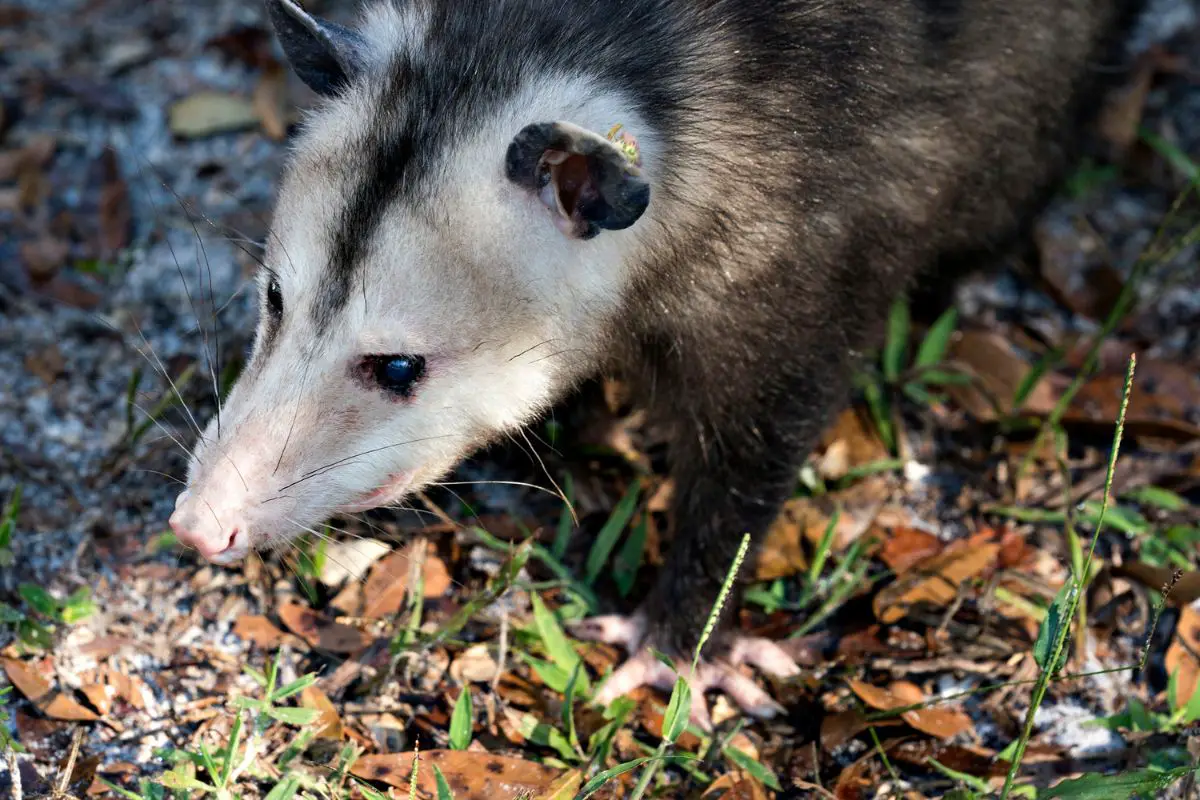
The black shouldered opossum has a small area that includes parts of Columbia, Brazil, and Peru. They are about a foot long, with another foot-long tail, and weigh between one and two pounds. They have gray fur that changes to black around their shoulders.
They have a longer life span than many opossums, living as long as seven years in captivity. They like living in the trees of the rainforest. They are slow-moving and nocturnal.
They like to eat the nectar of flowers and fruits. They are also known to eat small vertebrates. These animals live in isolated areas and their habitat is shrinking.
They are nocturnal and build nests around the shores of streams or lakes. They are solitary individuals except during the mating season. The male is not involved in caring for the young.
Females have a well-developed pouch, and it is believed breeding can happen any time of year. They have their babies soon, and then enter the pouch and stay there until they are more developed.
4. Bushy-tailed opossum
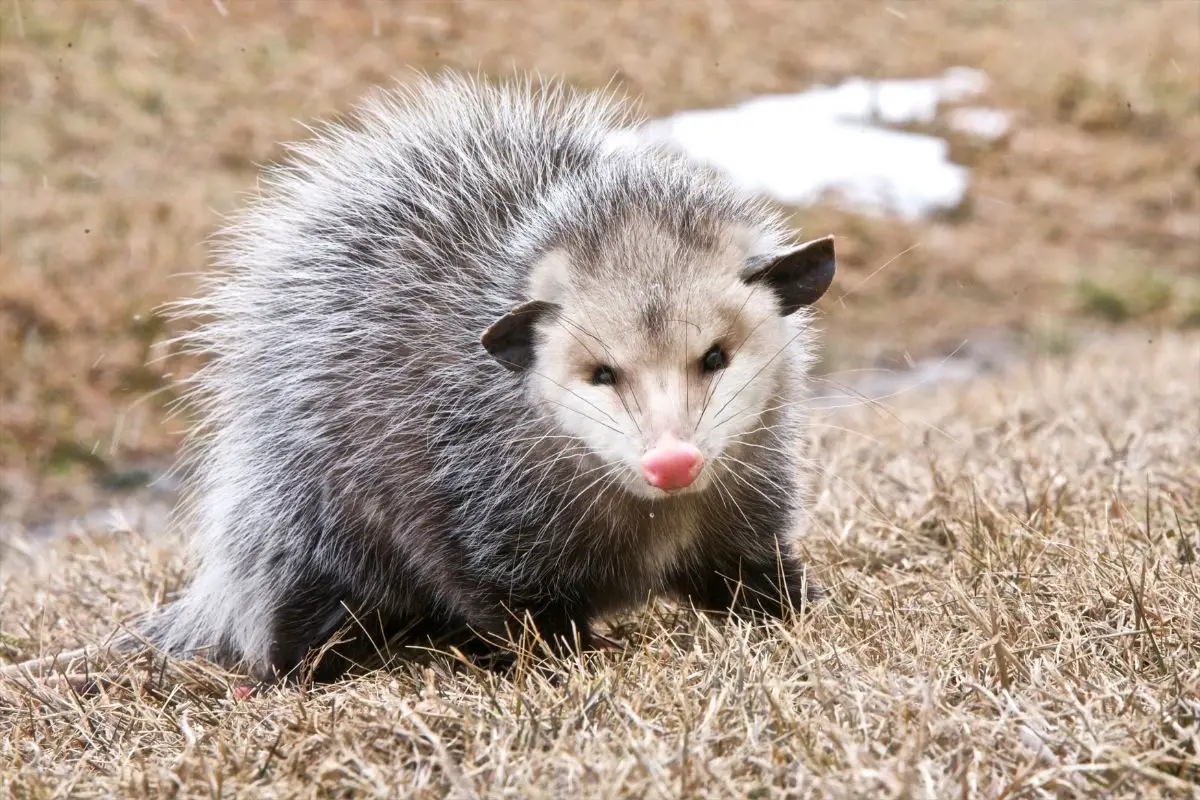
The Bushy-tailed opossum is a rare creature that lives in the Amazon basins of Brazil and Paraguay. They are a medium-sized species, with large dark ears and a gray coat. They like living in the canopy of the rainforest.
They have been found only in forests, and do not come near human spaces. They can move quickly through branches and hanging vines in the canopy. They weigh in at five or six ounces and are 13 inches long.
They are able to build nests in trees, or may build one beneath the undergrowth of the forest. This rare species has not been widely studied. Based on its similarity to other marsupials, scientists assume it lives for about two years and eats insects, seeds, and fruit.
The bushy-tailed opossum does not have a pouch, and the young hang on to the mother until they are weaned. They may be left in the nest while she looks for food.
5. Four-eyed opossum
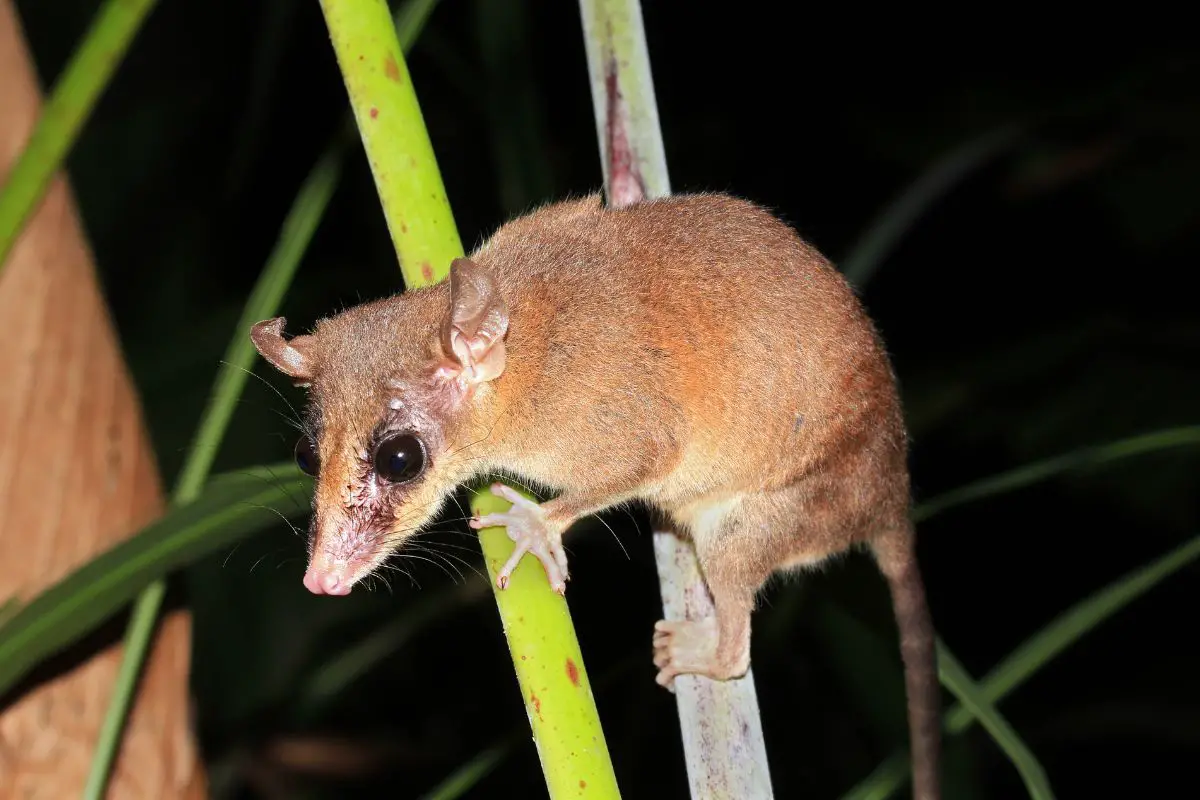
The four-eyed opossum gets its name from the markings around its eyes that give the appearance of double eyes. There are several species of this type of opossum spread around South America. They live in southern Mexico and go as far south as Bolivia.
There are gray and brown varieties or species. It has a white spot above each eye. It has a multi-colored tail, and its fur is gray to cream-colored. Some species have black ears.
Depending on the species, they may weigh as little as one pound, or weigh as much as five or six pounds. They are about a foot long in most cases. They are nocturnal and solitary.
They like to live in damp areas around streams. It is a good swimmer but prefers the ground or trees. It does not play dead as some opossums do.
It is aggressive and will fight when provoked. The four-eyed opossum likes to eat fruits, nectar, insects, and small mammals. This opossum is immune to most snake bites.
Species include:
- Anderson’s four-eyed opossum (Philander andersoni)
- Common four-eyed opossum (Philander canus)
- Deltaic four-eyed opossum (Philander deltae)
- Southeastern four-eyed opossum (Philander frenatus)
- McIlhenny’s four-eyed opossum (Philander mcilhennyi)
- Dark four-eyed opossum (Philander melanurus)
- Mondolfi’s four-eyed opossum (Philander mondolfii)
- Black four-eyed opossum (Philander nigratus)
- Olrog’s four-eyed opossum (Philander olrogi)
- Gray four-eyed opossum (Philander opossum)
- Guianan brown four-eyed opossum (Metachirus nudicaudatus)
6. Mouse Opossum
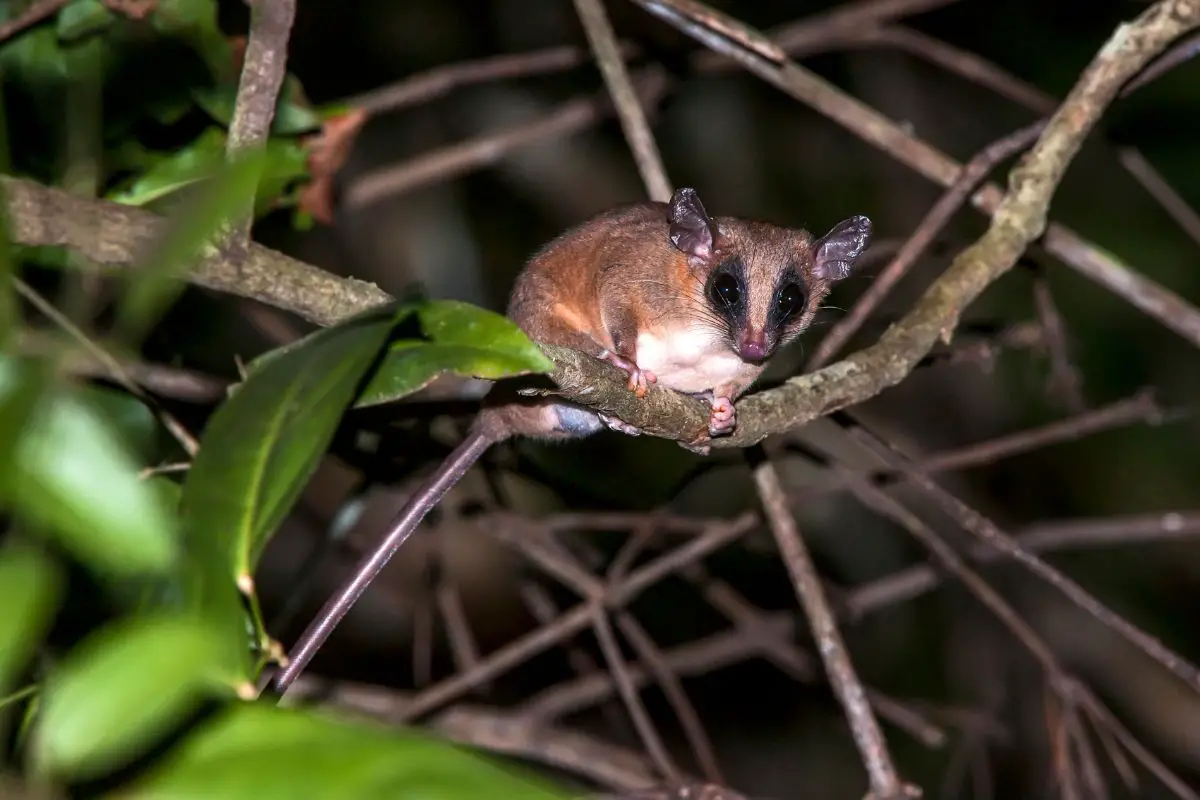
The Mouse Opossum is a very small animal that has more than 50 species spread across two subgenuses. They are part of the Marmosa genus. The shorter-haired opossums make up one group, and the longer-haired ones, called woolly, make up the other group.
They like warm and wet environments. Some are found only in Mexico, while others go from Mexico through central South America into Brazil and Argentina. Some have very small areas. They can vary from four inches long to 20 inches long.
Fat-tailed opossums store fat in their tail, while others are not able to do so. Most have large ears that have no hair. They are usually pale gray or brown.
Darker-colored mouse opossums live in more mountainous areas. Females lack a pouch but are still called marsupials. They are good climbers and build nests in holes in trees and large cacti.
They also like hollow logs. Some have big litters, as many as 15 at a time, while most are less than half of that. Woolly mouse opossums live primarily in Brazil and are in Peru as well as the northern part of the continent.
They like to live in trees and are often found on farms or plantations. They eat fruit and insects. They spend much of their time foraging for food and are nocturnal.
They are called woolly because they have longer and thicker hair than other opossums. The subgenus Marmosa has opossums throughout South America, mostly in Brazil. The Subgenus Micoureus has nine species, and some say it should not be considered a separate subgenus.
These wooly opossums live primarily in Paraguay and the west of the Andes. The only physical difference is the slightly different size of the skull. Other differences are genetic.
- Subgenus Marmosa
- Heavy-browed mouse opossum (Marmosa andersoni)
- Isthmian mouse opossum (Marmosa isthmica)
- Rufous mouse opossum (Marmosa lepida)
- Mexican mouse opossum (Marmosa mexicana)
- Linnaeus’s mouse opossum (Marmosa murina)
- Quechuan mouse opossum (Marmosa quichua)
- Robinson’s mouse opossum (Marmosa robinsoni)
- Red mouse opossum (Marmosa rubra)
- Simon’s mouse opossum (Marmosa simonsi)
- Tyler’s mouse opossum (Marmosa tyleriana)
- Waterhouse’s mouse opossum (Marmosa waterhousei)
- Guajira mouse opossum (Marmosa xerophila)
- Zeledon’s mouse opossum (Marmosa zeledoni)
- Adler’s mouse opossum (Marmosa adleri)
- Kalinowski’s mouse opossum (Hyladelphys kalinowskii)
- Tehuantepec gray mouse opossum (Tlacuatzin canescens)
- Subgenus Micoureus
- Tate’s woolly mouse opossum, Marmosa paraguayanus
- Alston’s woolly mouse opossum (Marmosa alstoni)
- White-bellied woolly mouse opossum (Marmosa constantiae)
- Northeastern woolly mouse opossum (Marmosa demerara)
- Little woolly mouse opossum (Marmosa phaeus)
- Bare-tailed woolly mouse opossum (Marmosa rutteri)
- Bare-tailed woolly opossum (Caluromys philander)
- Derby’s woolly opossum (Caluromys derbianus)
- Brown-eared woolly opossum (Caluromys lanatus)
7. Short-tailed opossum
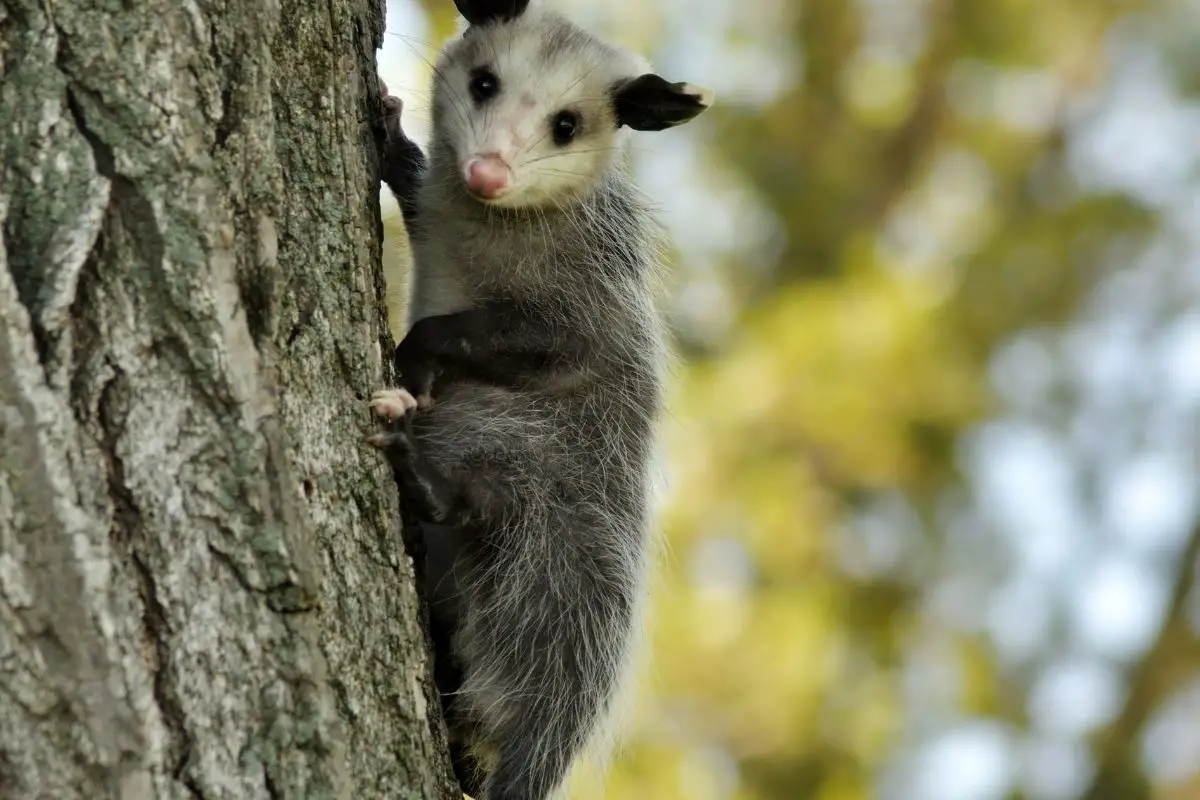
The short-tailed opossum lives mostly in Brazil, but can be found in other South American countries. The small animal, not much bigger than a mouse, has become a popular pet in recent years. They are also used in a lot of scientific studies.
They are part of the Monodelphis genus, and it includes red-footed and red-sided opossums. They do not have a pouch as other marsupials do, which contributes to their name-Monodelphis. These are solitary animals, however, and will fight each other.
As pets, they should not be kept together. They can kill and eat other animals their own size. They live in forests and shrubby areas, but some species like to invade the homes of people just as mice do in the United States.
They may be four to seven inches long and usually weigh less than four ounces. They may have a tail that is almost as long as the body. Their fur is different shades of brown, mixed with gray or white.
The tail and ears have almost no hair. They can live for four years in captivity, and much less than that in the wild. They are nocturnal, spending days in their nests, which may be in trees, rocks, or in buildings.
The nests of females are more complex than those of males. They produce rapidly, having as many as five liters of 10-12 every year. They are not an endangered species as a result, even though they have predators and are captured by humans.
Red-legged or red-sided opossums get their name from the color markings and are otherwise the same as other short-tailed opossums.
- Genus Monodelphis
- Sepia short-tailed opossum (Monodelphis adusta)
- Northern three-striped opossum (Monodelphis americana)
- Northern red-sided opossum (Monodelphis brevicaudata)
- Yellow-sided opossum (Monodelphis dimidiata)
- Gray short-tailed opossum (Monodelphis domestica)
- Emilia’s short-tailed opossum (Monodelphis emiliae)
- Amazonian red-sided opossum (Monodelphis glirina)
- Handley’s short-tailed opossum (Monodelphis handleyi)[87]
- Ihering’s three-striped opossum (Monodelphis iheringi)
- Pygmy short-tailed opossum (Monodelphis kunsi)
- Marajó short-tailed opossum (Monodelphis maraxina)
- Osgood’s short-tailed opossum (Monodelphis osgoodi)
- Hooded red-sided opossum (Monodelphis palliolata)
- Long-nosed short-tailed opossum (Monodelphis pinocchio)
- Reig’s opossum (Monodelphis reigi)
- Ronald’s opossum (Monodelphis ronaldi)
- Chestnut-striped opossum (Monodelphis rubida)
- Saci short-tailed opossum (Monodelphis saci)
- Long-nosed short-tailed opossum (Monodelphis scalops)
- Southern red-sided opossum (Monodelphis sorex)
- Southern three-striped opossum (Monodelphis theresa)
- Red three-striped opossum (Monodelphis umbristriata)
- One-striped opossum (Monodelphis unistriata)
8. Chacoan pygmy opossum
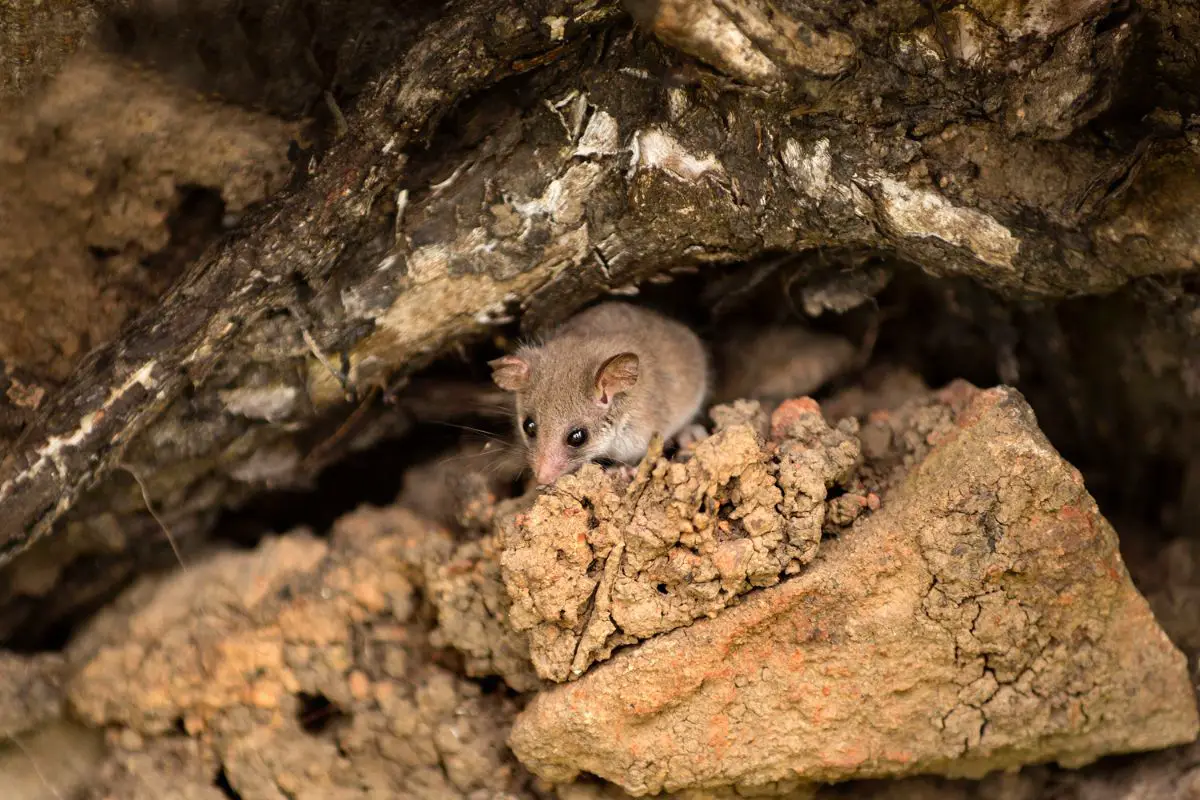
The Chacoan Pygmy Opossum is the only species in its genus and was only listed as its own category in 2004. It is a rare animal and lives in a very small area of northern Argentina. They are listed as a threatened species because their already small area is shrinking.
They are the smallest known variety of Opossum with a length of 2.6 inches, not including the trial. They are the size of a common mouse and are becoming a popular pet in South America. They live less than two years.
They can be gray or brown, and the coloring of their fur is not consistent. They have longer digits than other marsupials and do not have the pouch that many have. They live in forests and move into buildings or houses when they get the chance.
They eat insects and fruit.
9. Patagonian opossum
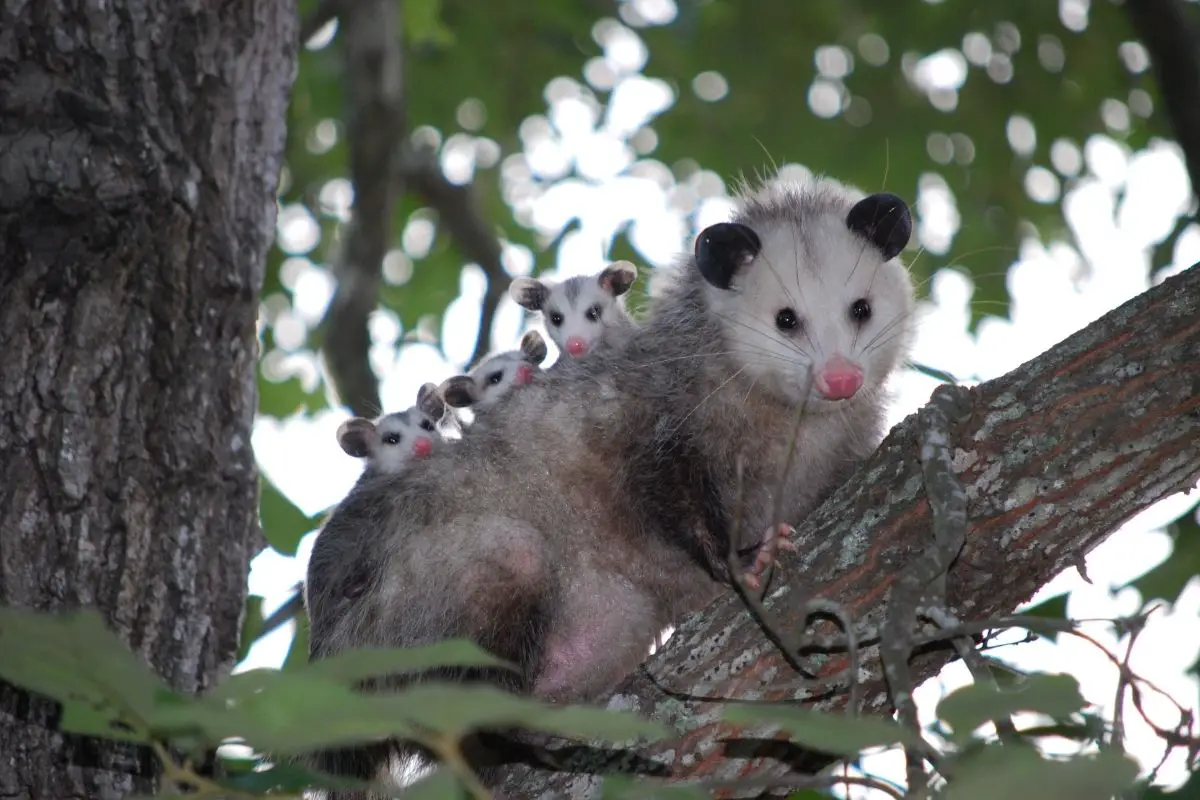
The Patagonian Opossum lives in central to southern Argentina. They live further south than any other opossum and survive harsh winters there. They are small creatures, about 10-12 inches long and 3-4 ounces when fully grown.
They have a gray face, with a pale face, and black rings around their eyes. They have dense dark gray fur over their bodies and may have white fur underneath. They are marsupials but do not have a pouch.
They have long claws that are helpful with climbing. They have a tail that can get thicker as it stores fat that can be used later. These opossums eat insects, small vertebrates, birds, and mice.
They are preyed upon by owls, and humans eat them too at times. They hibernate for just a few days at a time. They live on the ground in areas of shrubs, grasslands, and savannahs.
They live in a dry cold area of Patagonia. They can forage under snow for rodents. Both males and females build nests but they are solitary animals.
They are nocturnal. Like other opossums, they sometimes live near where people live and can be a pest. They may help control rodents, but they can eat crops.
10. Gracile Opossum
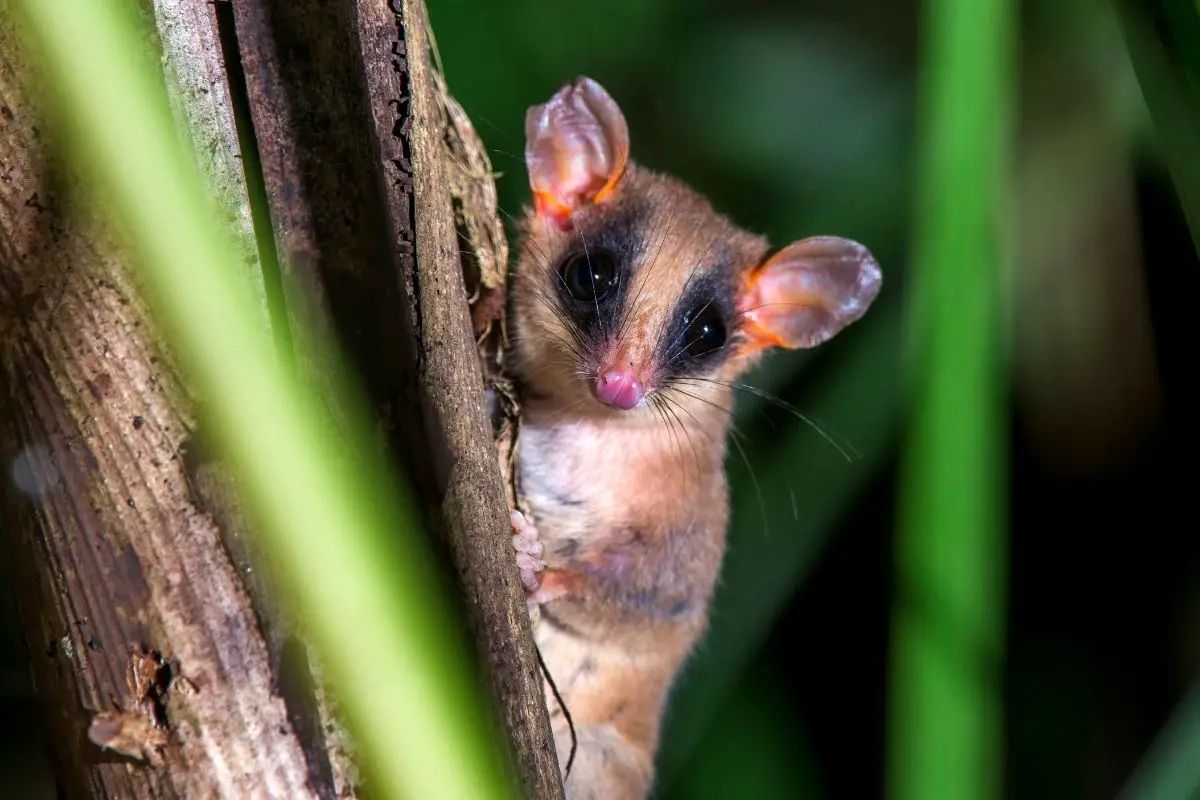
The Gracile Opossum has been split into two genus – the Cryptonanus and the Gracillinanus. The two are barely distinguishable, though the cryptonanus has a slightly longer tail and bigger ears. They would barely be noticeable to the casual observer.
The differences are in the bone structure and where they live. There are five species of Cryptonanus and six of Gracillinanus. The coloration of the fur and some markings are also different between the two.
Both are considered mouse opossums and live all over the northern half of South America, and into Central America to some extent. They eat wasps at times but prefer small invertebrates, ants, worms, and some plants. Most of the species are nocturnal, but some are diurnal.
They are good climbers, can be found in trees at times, and they like to dig holes in the ground as well. These are small creatures weighing just a few ounces. They do not have pouches even though they are marsupials.
Genus Cryptonanus
- Agricola’s gracile opossum (Cryptonanus agricolai)
- Chacoan gracile opossum (Cryptonanus chacoensis)
- Guahiba gracile opossum (Cryptonanus guahybae)
- †Red-bellied gracile opossum (Cryptonanus ignitus)
- Unduavi gracile opossum (Cryptonanus unduaviensis)
Genus Gracilinanus
- Aceramarca gracile opossum (Gracilinanus aceramarcae)
- Agile gracile opossum (Gracilinanus agilis)
- Wood sprite gracile opossum (Gracilinanus dryas)
- Emilia’s gracile opossum (Gracilinanus emilae)
- Northern gracile opossum (Gracilinanus marica)
- Brazilian gracile opossum (Gracilinanus microtarsus)
Genus Marmosops
The Genus Marmosops became its own classification in 1989. These are mouse opossums that are generally slender, especially in their faces. There are 14 species and 22 subspecies that range from Panama to the bottom of Brazil and into Bolivia. They all like to live in humid forests.
They live on the ground of the forest, but they can climb to a certain degree. They make nests in the undergrowth of the forest. These opossums migrate with the weather at times.
They like to eat fruit, flowers, arthropods, and small vertebrates. Their diet changes with the seasons. Each species has different preferences for eating, depending on what is available and their environment.
The female can have a litter of as many as 15. The male often dies after breeding. The female cares for her young for a while and then she dies. Males have a lifespan of about a year and females about a year and a half.
Each generation is replaced by the next. Many species have chestnut brown hair. They have long tails and big ears that have no hair.
Many have a white underbelly of fur.
- Bishop’s slender opossum (Marmosops
- Narrow-headed slender opossum (Marmosops cracens)
- Creighton’s slender opossum (Marmosops creightoni)
- Dorothy’s slender opossum (Marmosops dorothea)
- Dusky slender opossum (Marmosops fuscatus)
- Handley’s slender opossum (Marmosops handleyi)
- Tschudi’s slender opossum (Marmosops impavidus)
- Gray slender opossum (Marmosops incanus)
- Panama slender opossum (Marmosops invictus)
- Junin slender opossum (Marmosops juninensis)
- Neblina slender opossum (Marmosops neblina)
- White-bellied slender opossum (Marmosops noctivagus)
- Delicate slender opossum (Marmosops parvidens)
- Brazilian slender opossum (Marmosops paulensis)
- Pinheiro’s slender opossum (Marmosops pinheiroi)
Genus Thylamys
There are 10 species in this genus, they are distinguished by their fat tails. The tail stores fat that they can use to survive when there is a shortage of food. The size of the tail depends on the season and how plentiful food is.
They live throughout Brazil. They like the tropical savanna and shrubland. They stay in nests they have built inside logs or in the ground.
They do not have deep burrows as some opossums do. These opossums are marsupials, but the female does not have a pouch. They have dark dorsal fur, lighter fur on the sides, and a white region underneath.
These animals average about four inches long, and their tales maybe that long as well. These opossums are nocturnal and forage for food at night. They eat insects, leaves, fruits, seeds, and other grains.
Most of these species are listed as vulnerable because of a loss of habitat.
- Cinderella fat-tailed mouse opossum
- Elegant fat-tailed mouse opossum (Thylamys elegans)
- Karimi’s fat-tailed mouse opossum (Thylamys karimii)
- Paraguayan fat-tailed mouse opossum (Thylamys macrurus)
- White-bellied fat-tailed mouse opossum (Thylamys pallidior)
- Chacoan fat-tailed mouse opossum (Thylamys pusillus)
- Argentine fat-tailed mouse opossum (Thylamys sponsorius)
- Tate’s fat-tailed mouse opossum (Thylamys tatei)
- Dwarf fat-tailed mouse opossum (Thylamys velutinus)
- Buff-bellied fat-tailed mouse opossum (Thylamys venustus)



